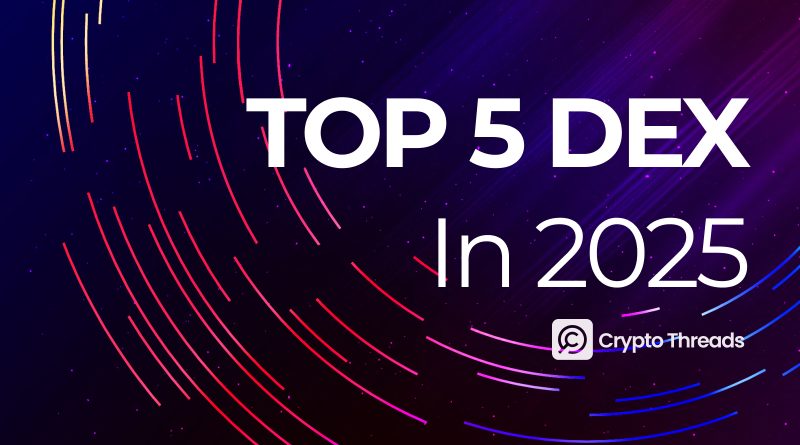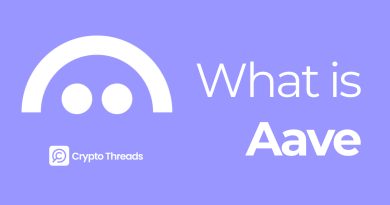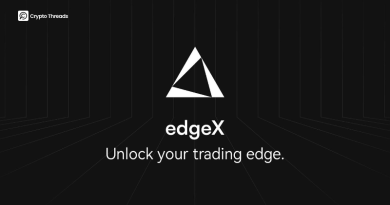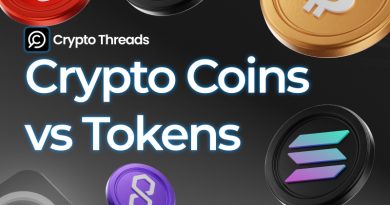Top 5 Leading Decentralized Exchanges in 2025: UniSwap, Hyperliquid, and More
The Decentralized Exchange (DEX) Market in 2025
The Decentralized Exchange (DEX) market has just exploded since early 2024, but it’s become a fundamental part of the whole DeFi thing. In 2025, analysts are talking about daily trading volumes potentially blowing past $12 billion.
Solana? It’s predicted to grab a huge chunk of the retail trading action, and you can see why – it’s fast and those transaction fees are tiny. Ethereum, even though it’s got some scaling hurdles, is expected to stay king for the big institutional trades. Think deep pools of money and a well-established ecosystem. What’s driving all this growth? Well, low fees are a big one, being able to trade across different blockchains is getting easier, and now we’re seeing AI tools pop up to help with trading.
But it’s not all sunshine and rainbows. There are still some real problems to be tackled: liquidity is spread out all over the place, regulators are watching very closely, and finding ways to make these things scale is still a work in progress. The DEX space is a total dogfight, seriously competitive. New ideas and fresh players are constantly jumping into the ring, all fighting for a piece of the action. To survive in this crazy fast-paced world, DEXs have to keep evolving and getting better.
Top 5 Leading Decentralized Exchanges (DEXs) 2025
When considering a Decentralized Exchange (DEX), it’s important to evaluate all core pillars such as Security (Smart contracts audits, Bug bounties, Time-tested and Battle-Hardened), Liquidity (TVL, Trading volume, Slippage, Pairs), UX and Usability, etc. By meticulously assessing these key factors, users can make more informed decisions when choosing a decentralized exchange, mitigating risks and maximizing their potential within the exciting and ever-evolving landscape of decentralized finance.
However, a wise trader needs to keep in mind that all trades contain risk, so starting with a small amount of money when first experiencing a new DEX is necessary. To better help you navigate through the space of DEXs, below are the five leading exchanges with strong foundation and robust trading metrics:
- UniSwap
Uniswap currently is the biggest AMM DEX protocol out there recently released their Uniswap V4.With user-friendly interface and high liquidity and TVL the platform provides a robust and seamless trading experience.
Uniswap v4 has this new innovative use of modular “hooks,” which allow for highly adaptable liquidity pools, providing users with flexibility and customization. Some Uniswap standout features are Time-Weighted Average Market Makers (TWAMMs), concentrated liquidity options, and a governance model powered by the UNI token.
Pros:
- Easy to Use: Simple interface for swapping tokens
- High Liquidity: Large pool of tokens with high TVL.
Cons:
- High Gas Fees: Ethereum gas fees can be expensive sometime
- Impermanent Loss: Liquidity providers may lose money if token prices change a lot.
- Limited Features: Lacks advanced trading feature compared to CEX
- Raydium
Raydium is currently the top trading DEX on Solana with hundreds of trading pairs. Raydium’s monthly trading volume in January 2025 reached approximately $22.4 billion, surpassing the long-standing leader, Uniswap, which recorded around $20.5 billion for the same period. In February 2025, Raydium frequently processed over $800 million in daily trading volume.
It’s awesome for traders who want trades to happen fast and not cost a bunch. You can take big swings with your trades and move your crypto to other blockchains super easily. A lot of regular traders like Solana because of Raydium.
Pros:
- Fast and Cheap Trades: Raydium offers lightning-fast transactions with low fees
- Access to Presales: Everyone can get early access to new tokens on Solana
- High Leverage Trading: High leverage is available on some trading pairs
- Multi-Chain Bridging: Raydium supports seamless asset transfers across different chain
- Integration with Serum DEX: This feature provides access to order-book liquidity, combining the benefits of automated market makers (AMMs) with traditional orderbook.
Cons:
- High Leverage Risks: While high leverage can boost gains, it also significantly increases the chance of substantial losses.
- Learning Curve: New traders might find it difficult to grasp advanced features like the CLMM pool and other tools.
- Hyperliquid
Hyperliquid is leading the decentralized perpetual futures exchange after dethroned DYDX, offering quality products for traders who like to trade on perpetual DEX. Hyperliquid is well-known recently in perpetual DEX market and margin trading, offering advanced tools like advanced order types, high leverage, and robust risk management features like cross-margin for futures traders while also offering ultra-low latency, thanks to its Layer 1 blockchain architecture.
Though many people have raised concerns about its recent scandals regarding the $12M attack and the $100M liquidation, Hyperliquid is still attracting $250M daily trading volume.
Pros:
- Ultra-Low Fees: Competitive trading cost for perpetual futures trading
- High Leverage Options: Offers up to 50x leverage on derivatives
- Decentralized & Permissionless: No KYC required; trades directly from self-custody wallets.
- Custom L1 Blockchain: Built for speed, scalability, and minimal latency in derivatives trading.
- Advanced Order Types: Supports limit orders, stop-loss, and cross-margin functionality.
Cons:
- Complexity for Beginners: Steep learning curve for traders unfamiliar with perps or decentralized platforms.
- No Fiat Support: Requires crypto deposits
- Orca
Orca is a DEX built on Solana. What’s good about it is that it’s really easy to use because it’s on Solana, everything’s quick and the fees are small. Orca even have “Whirlpools” that make it smarter for people who put money into liquidity pools but still keep things simple. If you just want to swap tokens or only just want to provide liquidity without getting into complicated stuff, Orca is designed for that. They are really trying to make DeFi accessible to everyone by keeping things simple and focusing on a good user experience.
Pros:
- User-Friendly: Really easy to navigate and understand.
- Fast and Cheap: Transactions are quick and fees are low.
- Efficient Liquidity: “Whirlpools” are a smart way to make liquidity providing more effective.
- Good for Simple Swaps and Yield Farming: Focuses on core DeFi activities without unnecessary complexity.
Cons:
- Fewer Advanced Tools: Might not have all the bells and whistles that super experienced traders might want for really complex strategies.
- Simplicity Focus: While great for ease of use, it might lack depth for users looking for more advanced features.
- Curve Finance:
Let’s talk about Curve Finance. This platform is a real powerhouse in the DeFi space, especially if you’re dealing with stablecoins, you could say Curve is a fundamental piece of the whole DeFi puzzle. What really makes Curve stand out is its ability to let you trade stablecoins with practically no slippage. If you’re looking to earn some extra crypto through yield farming, Curve’s APRs can be pretty attractive, which pulls in a lot of people looking to boost their earnings. But it’s not perfect. Curve isn’t really the place to go if you’re trading non-stablecoins but, what’s truly unique about Curve is how smart their pool designs are. They’ve really optimized how capital is used in their pools, specifically for stablecoin trading. It’s designed to encourage people to lock up their CRV tokens to get voting rights and better rewards, which helps keep liquidity high and the platform stable in the long run. Even with all the new competition popping up, Curve Finance is still a major player. It’s really essential infrastructure for stablecoins, making sure those transactions are smooth and reliable. You could definitely argue that Curve is indispensable to DeFi as a whole.
Pros:
- Low Slippage for Stablecoins: Trades between stablecoins with minimal price impact, saving you money.
- Attractive Yield Farming APRs: Offers opportunities to earn solid returns on your crypto.
- High TVL and Multi-Chain: Large amounts of locked funds and presence across multiple blockchains indicate trust and stability.
- veCRV Tokenomics: Encourages long-term participation and platform stability through token locking and voting rights.
Cons:
- Limited Liquidity for Non-Stablecoins: Not ideal for trading cryptocurrencies other than stablecoins.
- Complexity: While powerful, the veCRV system and intricacies of stablecoin pools can be more complex to understand for newcomers compared to simpler DEXs.
Wrapping Up: The DEX World in ’25 and Beyond
Okay, so jump ahead to 2025, and the whole Decentralized Exchange thing? It’s seriously buzzing, right? Definitely not a sleepy corner of crypto anymore. Uniswap? Still king of the hill, no doubt about it. You picture their V4 setup – like that caption says, “Uniswap’s multi-chain dashboard with concentrated liquidity pools” – and you just get it. They’ve really nailed that whole ‘works everywhere’ and ‘easy for anyone’ vibe.
Then you’ve got the Solana crew, DEXs like Raydium and Orca. These are the speed demons, you know? Super slick, super user-friendly, exactly what your average Joe or Jane trader is looking for. Imagine seeing Raydium’s layout, maybe with their “concentrated liquidity market maker” thing front and center – bam! Efficiency for Solana folks, right there. And Orca? Totally gets the Solana feel too, with their “concentrated liquidity pools (‘Whirlpools’)” as they call ‘em. They’re all about making DeFi on Solana just smooth.
For those looking for something a bit more intense, Hyperliquid steps in. They’re tackling the demand for decentralized perpetuals – basically, futures trading without the middlemen. Picture their “decentralized perpetual exchange interface” – it’s all about that high-powered, decentralized derivatives action.
And of course, you can’t forget Curve. They’re still the go-to for stablecoin swaps. When you need to trade stablecoins with minimal fuss and slippage, Curve’s “low-slippage stablecoin exchange,” is just unbeatable. They’ve carved out their niche and they own it.
Looking ahead, the future of DEXs really depends on hitting that sweet spot: balancing new ideas, keeping the liquidity flowing, and being resilient against regulations. It’s a tough act. For us users? A smart move is to spread things out a bit. Don’t just stick to one DEX. Try trading across different platforms. It’s the best way to navigate this dynamic, ever-changing DEX world.



